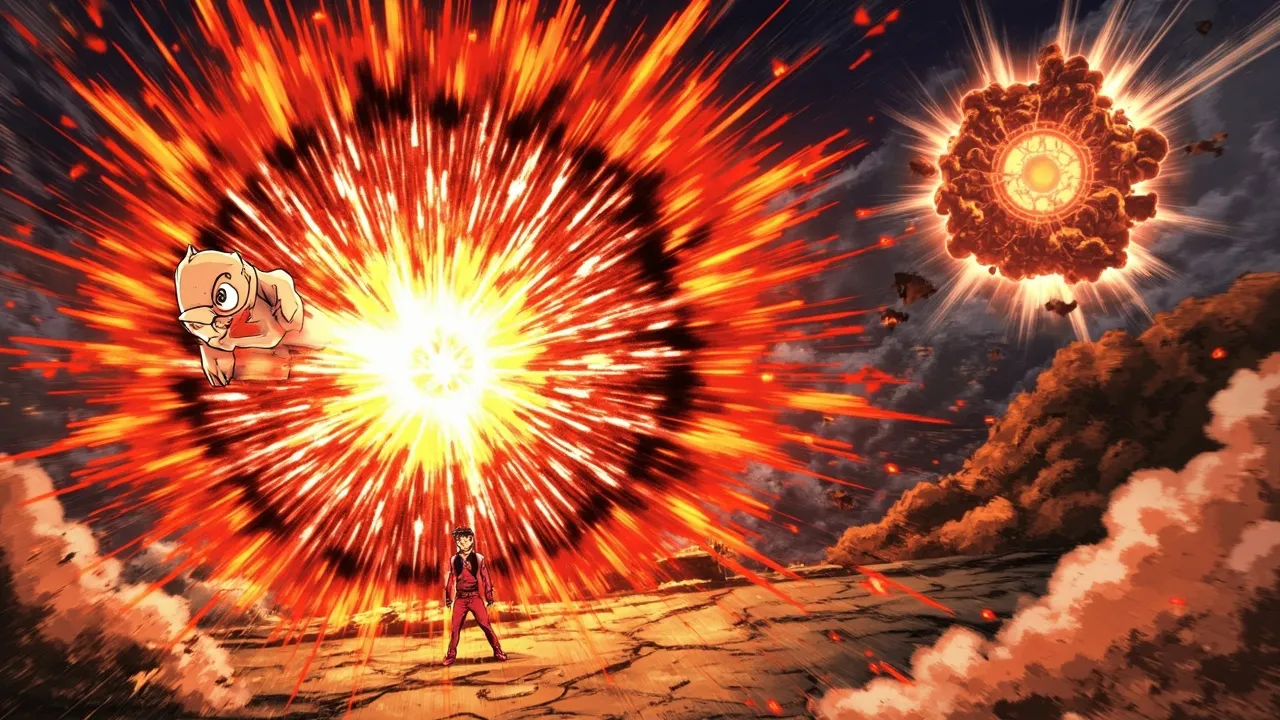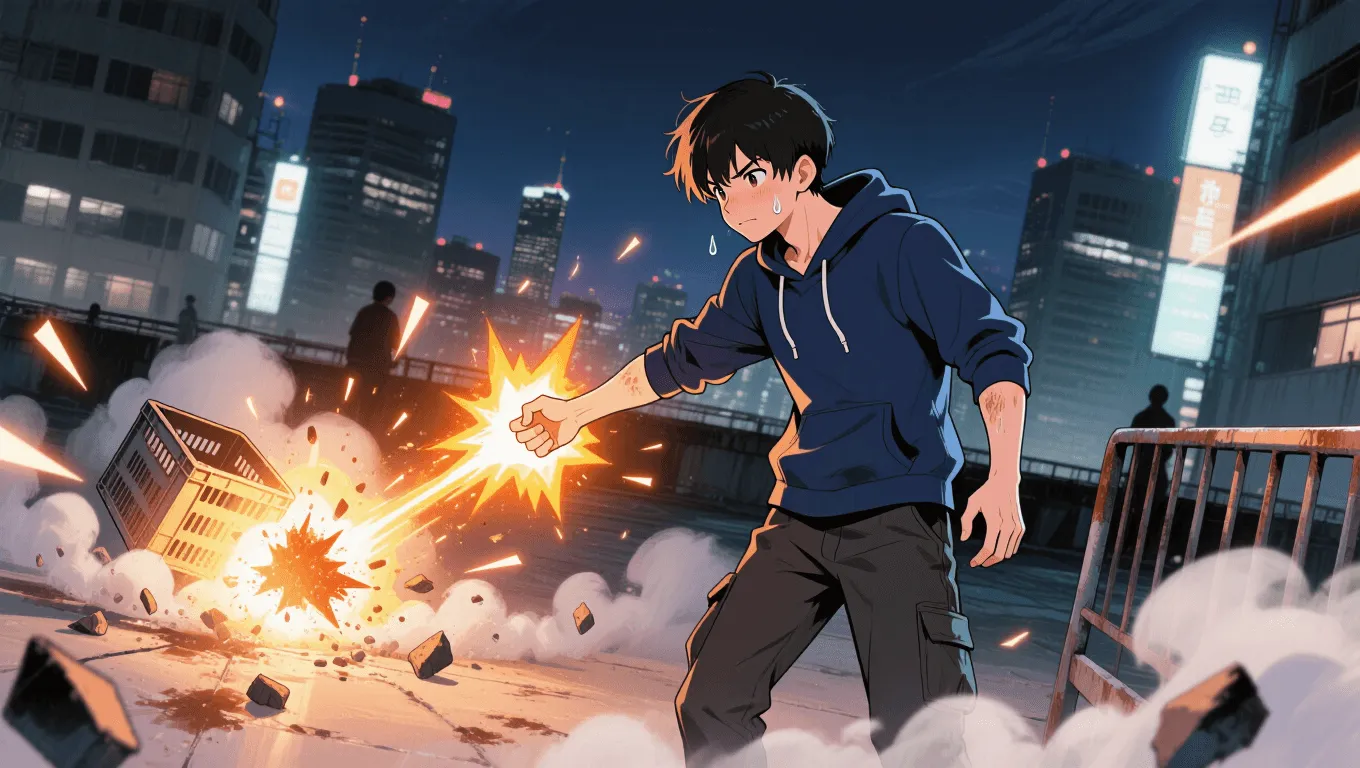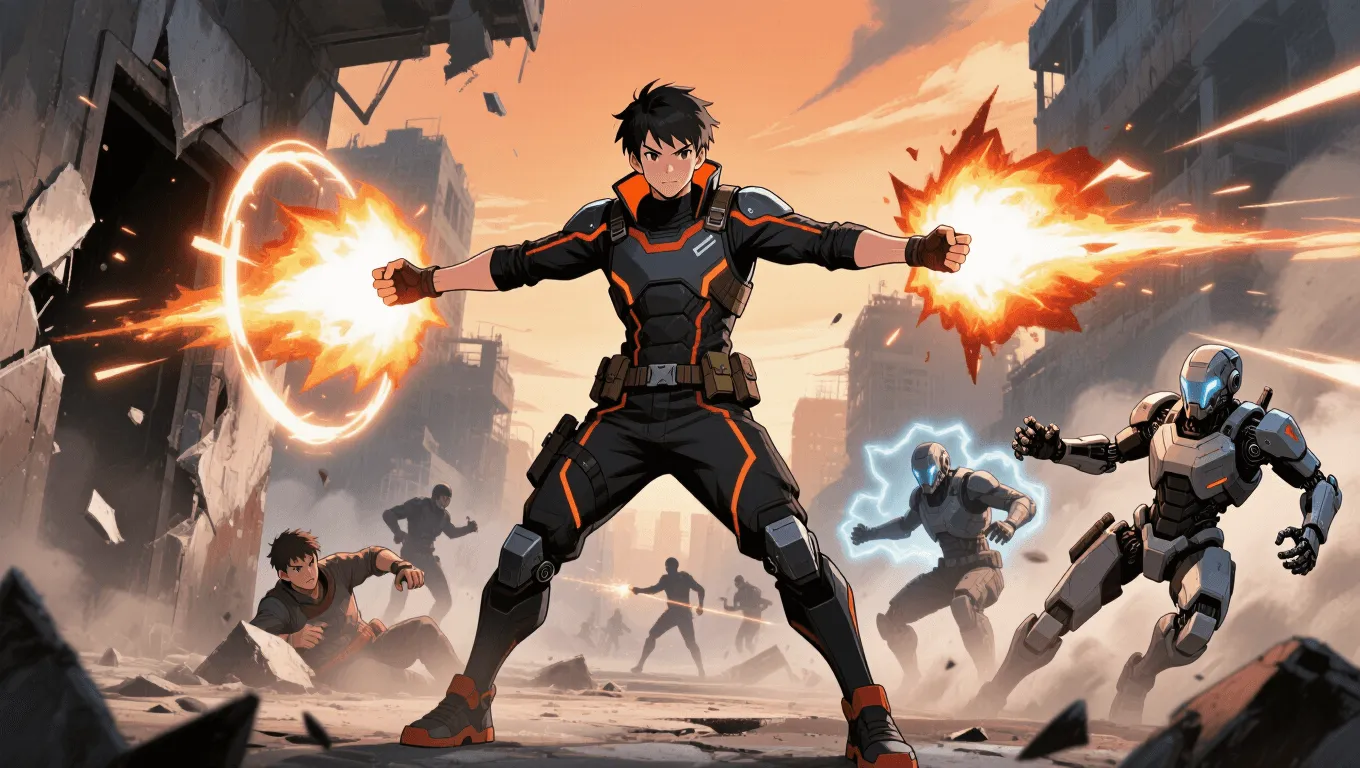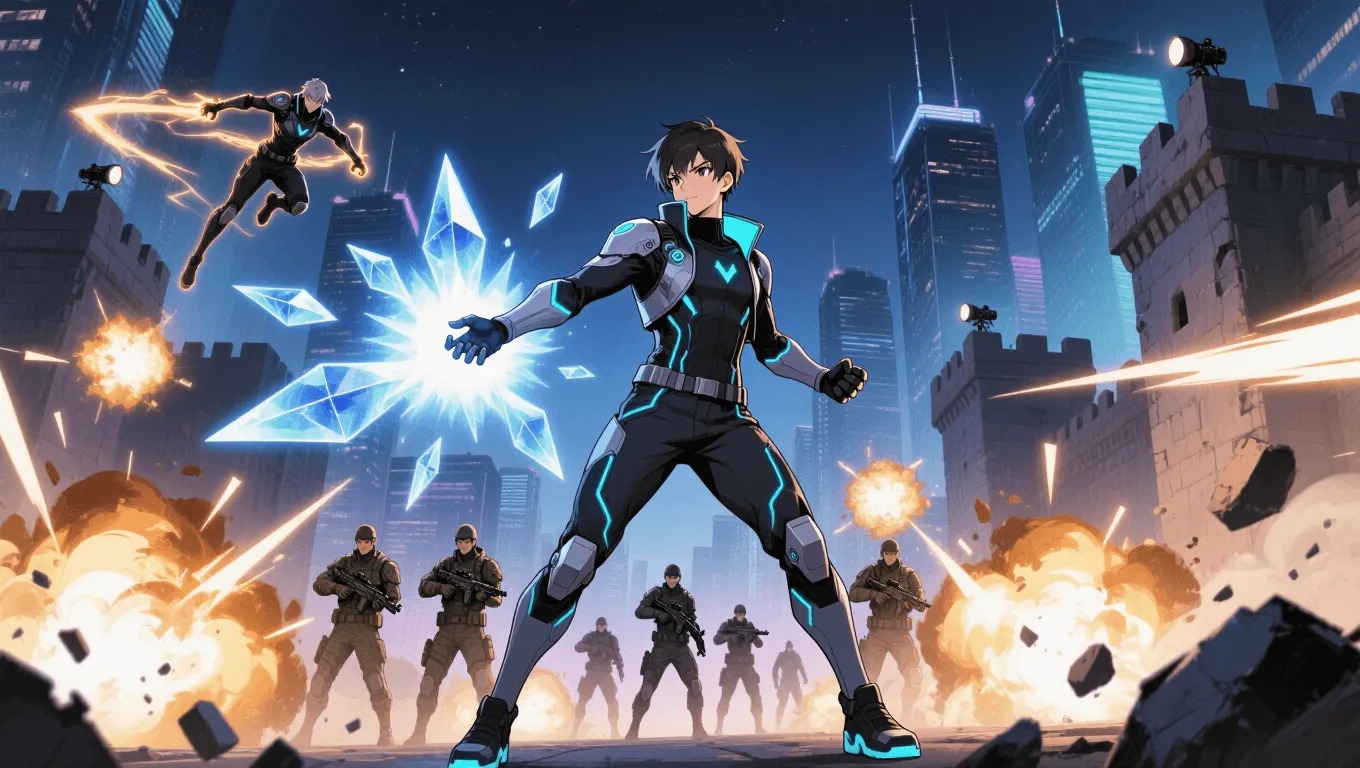Explosion Generation: The Ultimate Blast Power

Explosion Generation Video Demo 🎬
Table of Contents
- Explosion Generation Video Demo 🎬
- What Is Explosion Generation
- Core Abilities of Explosion Generation
- Application / Tactical Advantages in Combat
- Level: Level 1 🏙️, Level 2 🌇, Level 3 🌃
- Limitations of Using the Explosion Generation
- Weakness against what other superpowers
- Synergistic Power Combos
- Known Users
What Is Explosion Generation
Explosion generation is a superpower that lets a character create detonations on command—ranging from tight, surgical pops to city-shaking blasts. Unlike simple fire control, explosion generation focuses on concussive force and pressure waves, often with heat as a by-product. Skilled users manipulate blast radius, detonation timing, and shockwave direction to break defenses, clear zones, and rocket themselves through the air. In worldbuilding and RPG scenarios, this power offers a blend of raw damage, mobility, and area control that few abilities can match.
Exploring more abilities? Browse the complete list of superpowers or spark inspiration with the random superpower generator.
Core Abilities of Explosion Generation
Explosion generation typically branches into several specialized skill paths. Most users master a few of these and refine them over time.
Concussive Blasts
The cornerstone technique. The user compresses energy and vents it in a directional burst, prioritizing impact over flame. It’s ideal for disabling heavy targets, staggering bosses, and cracking fortified positions without sustained fire.
Blast Radius Control
Advanced practitioners can “dial” the radius from palm-sized microbursts to sweeping area-of-effect detonations. Radius shaping helps avoid friendly fire and lets the user open or close choke points at will.
Detonation Timing
From instant pops to delayed charges, detonation control enables traps, feints, and synchronized takedowns. In stealth-adjacent play, delayed microcharges placed on supports can topple structures at a precise moment.
Explosive Propulsion
By aiming blasts behind or beneath themselves, users achieve sudden acceleration, evasive zigzags, midair course corrections, and short flight-like hops. This mobility turns melee duels into vertical, three-dimensional chess.
Penetrative “Shaped” Charges
Directing the energy forward in a narrow cone produces a breaching effect (akin to shaped charges), punching through armor, bulkheads, and magical barriers more efficiently than a spherical blast.
Explosive Constructs
Some variants allow packing energy into “bombs,” spheres, or runic seals that stick to surfaces or float along patrol routes. These constructs can be primed for remote or proximity detonation.
Environmental Chain Reactions
Expert users trigger or piggyback on nearby volatile elements—gas mains, munitions, unstable crystals—to magnify output. Mastery includes calculating splash effects and avoiding catastrophic collateral damage.
Application / Tactical Advantages in Combat
Explosion generation shines at every range when used thoughtfully.
-
Breaching and Objective Play: Shaped detonations open doors, collapse barricades, or create new paths. Ideal for siege scenarios and timed escapes.
-
Crowd Control: Staggering shockwaves knock back groups, disrupt spellcasting, and interrupt boss abilities. Pair with area denial for zone dominance.
-
Zone Denial: Repeated bursts force enemies off high ground, break formations, and block choke points with debris and pressure waves.
-
Anti-Armor: Concentrated cones overwhelm shields and plating. Even energy barriers that shrug off heat may yield to pure kinetic overpressure.
-
Mobility and Gap-Closing: Explosive propulsion enables instant repositioning—dive in for a combo, then blast out before retaliation.
-
Combo Enabler: The brief window of disorientation after a blast sets up allies for precision strikes, grapples, or status effects.
-
Psychological Warfare: Thunderous reports and sudden craters sap enemy morale, drawing attention and forcing reactive play.
Level: Level 1 🏙️, Level 2 🌇, Level 3 🌃
Level 1 🏙️

Beginners manifest small, unstable bursts with limited control. Expect:
-
Output: Short-range pops capable of knocking back unarmored foes and breaking light cover.
-
Control: Inconsistent blast radius; accidental self-blast is common at close quarters.
-
Stamina: Moderate fatigue after a few blasts; heat buildup on hands/launch points.
-
Gameplay Focus: Learning safe standoff distance, practicing single-target staggers, and mastering basic propulsion hops for repositioning.
-
Training Goals: Drills on radius discipline, detonation timing, and safe angles to avoid friendly fire.
Level 2 🌇

Intermediate users balance power with precision and begin influencing the battlefield.
-
Output: Mid-size detonations with reliable shaping; can breach reinforced doors and stagger heavy units.
-
Control: Clean differentiation between concussive vs. incendiary profiles; better directional focus reduces collateral damage.
-
Stamina: Sustainable skirmish rhythm; cooldowns manageable with breathing and stance techniques.
-
Gameplay Focus: Coordinated ambushes, delayed charges for traps, and combo setups with allies (grapples, stuns, debuffs).
-
Signature Moves: Shaped cones for armor piercing, proximity mines on patrol routes, leap-cancel propulsion for aerial reads.
Level 3 🌃

Masters turn blastcraft into an art form—decisive and devastating.
-
Output: City-block pressure waves or perfectly surgical microcharges; seamless multi-point detonations.
-
Control: Millisecond timing windows; precise shockfront orientation to throw debris away from allies.
-
Stamina: Efficient energy cycling; extended engagements with minimal performance drop.
-
Gameplay Focus: Area denial at scale, breaching fortified citadels, and air-dash dogfighting with high-G pivots.
-
Signature Moves: Multi-vector detonations (above/behind targets), resonance bursts that shake structures, and kinetic “silence pops” that emphasize pressure over sound for stealth raids.
Limitations of Using the Explosion Generation
Even the strongest blast artist must respect the power’s constraints.
-
Collateral Damage: Shrapnel, overpressure, and structural collapse can endanger civilians and allies. Urban or underground arenas demand strict discipline.
-
Backblast and Overpressure: Poor angles or confined spaces reflect shockwaves, causing self-stun, barotrauma, or equipment failure.
-
Line-of-Sight and Cover: Dense barriers or anti-blast materials reduce effectiveness unless shaped precisely.
-
Resource Burn: Large detonations spike energy expenditure; repeated heavy bursts risk fatigue, overheating, or power misfires.
-
Environmental Dampening: Underwater use diffuses energy differently, and vacuum environments change how combustion behaves—reliance on pure kinetic methods becomes essential.
-
Detection Risk: Loud reports and thermal signatures attract attention. Covert missions require low-yield microcharges and sound-dampening tactics.
Weakness against what other superpowers
Certain abilities reliably blunt or counter explosion generation:
-
Force Field Manipulation: Adaptive barriers absorb or redirect pressure waves, nullifying splash damage and protecting critical assets.
-
Energy Absorption/Redirection: Kinetic or heat-absorbing powers drain the blast’s payload or turn it back toward the user.
-
Time Dilation and Precognition: Slowing time or foreseeing detonation timing lets opponents dodge, counter-position, or preempt traps.
-
Intangibility/Phasing: Targets that slip out of the material plane ignore both shrapnel and shockwaves.
-
Seismic/Gravity Control: Gravitational shear or ground-anchoring negates knockback and stabilizes formations under blast pressure.
-
Sound/Pressure Control: Acoustic dampeners and pressure regulators flatten the explosive wavefront and mitigate concussive effects.
Synergistic Power Combos
Explosion generation scales dramatically with the right partner abilities—or as a multi-kit build.
-
Aerokinesis (Wind Control): Shape and carry the shockfront to extend range, curve blasts around cover, or create rolling pressure walls.
-
Terrakinesis (Earth/Stone): Use blasts to fracture bedrock while earthmovers channel debris into instant fortifications or avalanches.
-
Cryokinesis: Flash-cool structures post-blast to induce thermal shock fractures; ice fields funnel enemies into pre-placed charges.
-
Teleportation: Blink in, plant microcharges, blink out; chain detonations ignite chaos without ever exposing the user.
-
Electrokinesis: Ionize air to precondition a blast path or overload gadgets stunned by overpressure.
-
Magnetism/Metal Control: Launch shrapnel clouds precisely, turning low-yield detonations into surgical flechette cones.
-
Healing/Regeneration (Ally): Offsets backblast risk, enabling bolder breaching plays and sustained siege operations.
-
Stealth/Invisibility: Pair silent microcharges with visual deception; detonate after the team is already repositioned.
Known Users
Writers and designers often cite characters whose kits showcase explosion generation or explosive energy manipulation as a core theme:
-
Boom-Boom (Tabitha Smith, Marvel Comics): Creates “time bombs” of volatile plasma that she can size, throw, and detonate at will—excellent examples of delayed charges and radius control. Learn more on the Marvel Database.
-
Nitro (Marvel Comics): Famous for catastrophic self-detonations followed by reconstitution, illustrating high-yield output and extreme collateral risk. See his profile on the Marvel Database.
-
Captain Atom (DC Comics): While primarily an energy and quantum powerhouse, many portrayals include controlled explosive releases and channeling overpressure effects. Details at the DC Database.
-
Boomer (Image/Other Variants) and various RPG archetypes: Numerous tabletop and video game classes emulate explosive specialists with crafted charges, directional shockwaves, and breaching tools.
